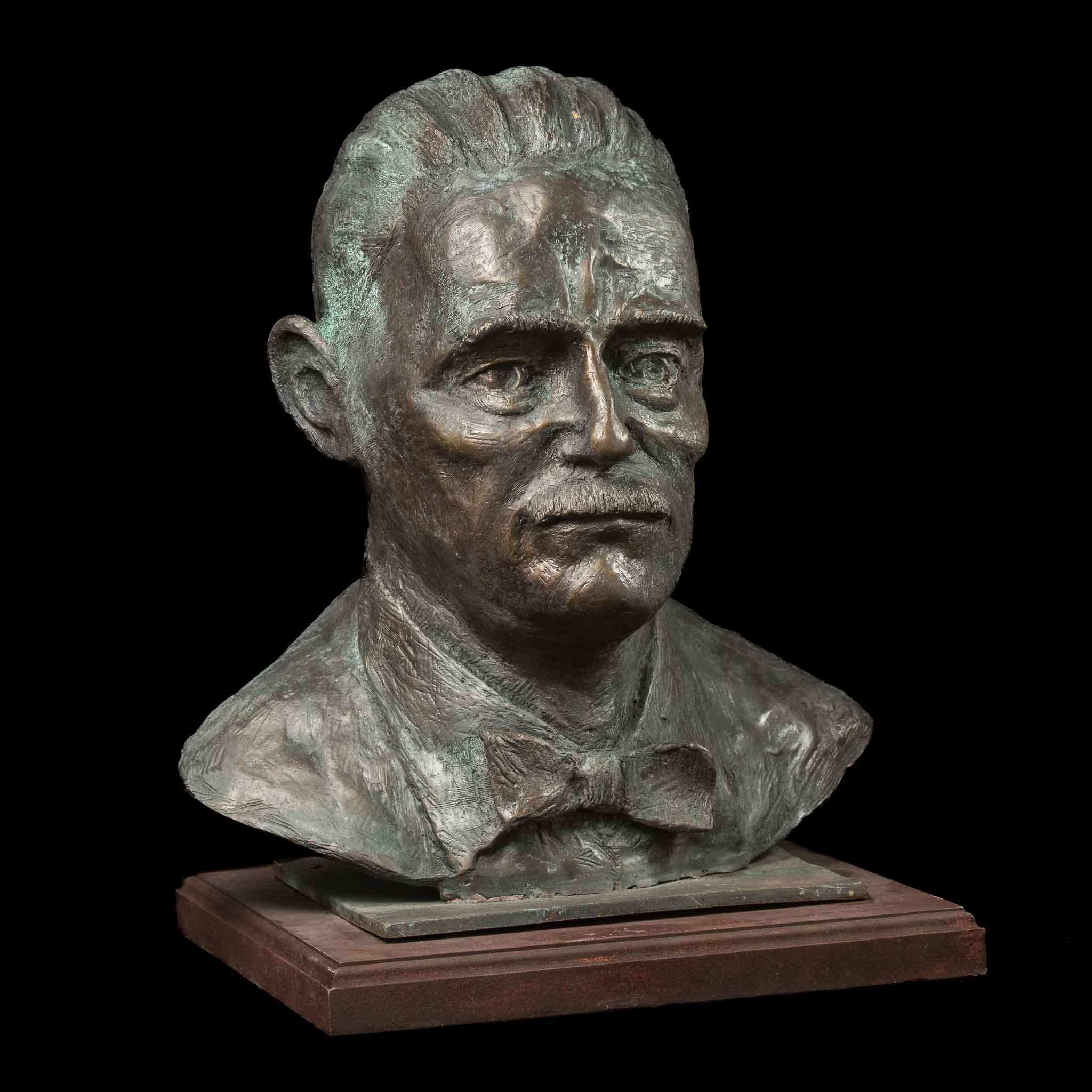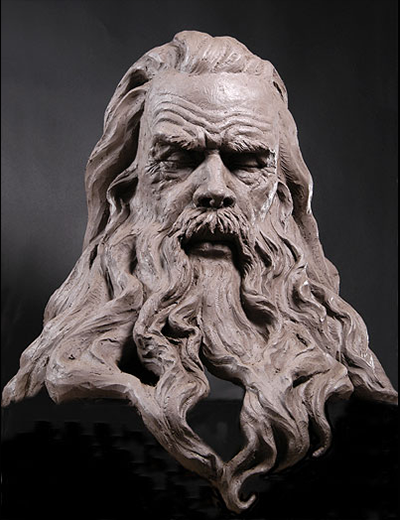Timeless Charm in Bronze: Introducing the Art of Bronze Sculptures
Wiki Article
The Advancement of Sculptures: From Ancient to Modern
The Development of Sculptures: From Ancient to Modern.Sculpture, among the earliest kinds of art, has been an important part of human people for centuries (Portrait Sculptor). From the ancient worlds of Egypt and Greece to the contemporary age, sculptures have evolved, showing modifications in creative strategies, materials, and cultural impacts. This journey via time traces the advancement of sculptures, discovering the shifts stylishly, subject, and artistic expression
Starting with the old globe, sculptures crafted from rock and later on bronze caught the essence of divine beings, rulers, and day-to-day life. The Renaissance period witnessed a rebirth of classic sculpting strategies, as artists sought to replicate the graceful kinds of ancient Greek and Roman sculptures. In the contemporary age, artists tested standard limits, accepting abstraction and testing with new products.

This expedition will look into the varied development of sculptures, exposing the abundant tapestry of imaginative expression throughout different periods and cultures.
Ancient Sculptures: From Rock to Bronze
Ancient sculptures transitioned from being taken of rock to being cast in bronze. This change noted a considerable advancement in the art of sculpture, enabling for higher improvement and information in the completed jobs. Rock sculptures, while outstanding in their own right, were restricted by the nature of the product. Rock called for comprehensive shaping and sculpting, commonly resulting in a much more simplified depiction of the subject.The introduction of bronze as a tool for sculptures brought around a revolution in creative expression. Bronze used carvers the opportunity to create lifelike and complex kinds that were not possible with rock. The process of casting bronze permitted the creation of several duplicates of a sculpture, making it possible for bigger circulation and conservation of these creative masterpieces.
The shift from rock to bronze likewise saw a shift in the subject matter of sculptures. While stone sculptures primarily depicted gods, sirens, and mythical figures, bronze sculptures began to show a more comprehensive variety of subjects, consisting of daily people and pets. This growth of subject showcased the flexibility and versatility of the bronze medium.
Renaissance Revival: Shaping in the Timeless Design
The Renaissance revival of sculpture witnessed a resurgence in the classic design, structure upon the developments made throughout the shift from rock to bronze in ancient sculptures. Throughout this period, musicians looked for to recreate the classic aesthetic and ideals of beauty that prevailed in old Greek and Roman sculptures.Among the essential attributes of the Renaissance revival was the emphasis on naturalism and the human type. Carvers like Donatello and Michelangelo strove to catch the physiological details and expressions of their subjects with unprecedented precision. They researched the body and integrated their monitorings right into their sculptures, resulting in lifelike and sensible representations.
One more essential aspect of the Renaissance resurgence was the expedition of perspective and deepness. Artists utilized methods such as contrapposto, where the weight of the body is changed away, creating a sense of movement and dynamism. They also trying out various materials, consisting of marble and bronze, to accomplish a degree of sophistication and complexity in their sculptures.
The classical design of the Renaissance revival had a profound influence on later durations of art, acting as a structure for the growth of Western sculpture. It brought a restored appreciation for the beauty and magnificence of the human form, and its legacy can still be seen in contemporary sculptures today.
Innovation and the Avant-Garde: Breaking Conventional Boundaries

One of the key features of modernist sculpture was the emphasis on abstraction. Artists moved far from sensible depictions and instead focused on capturing the essence of the subject with streamlined kinds and geometric forms. This departure from typical representation enabled musicians to share their feelings and concepts in an extra subjective and personal manner.
In addition, the avant-garde motion challenged social norms and conventions, urging musicians to experiment and press the borders of their art - Bronze Sculptures. Carvers began including unconventional materials such as located objects, commercial products, and even all-natural elements into their work. This exploration of new materials and techniques not just expanded the possibilities for sculpture however likewise challenged the conventional notions of what could be considered art
Contemporary Sculptures: Discovering New Products and Concepts
With a concentrate on exploring brand-new products and principles, contemporary sculptures have actually reinvented the field of art. Artists today are pushing the limits of traditional sculpture by using cutting-edge materials and exploring with abstract ideas. These sculptures test traditional notions of kind, definition, and materiality, inviting viewers to take part in a thought-provoking and new creative experience.Contemporary artists are welcoming a variety of products, consisting of plastic, glass, steel, and also organic issue. Portrait Sculptor. They are not limited to the standard tool of rock or clay, permitting higher liberty of expression and trial and error. This shift in the direction of unusual products has opened new opportunities for musicians to create sculptures that are vibrant, interactive, and visually striking
Along with checking out new materials, modern sculptures additionally look into complicated and abstract ideas. Musicians are now exploring motifs such as identification, social problems, and the setting, making use of sculpture as an effective tool for social discourse and introspection. These sculptures test viewers to assume seriously and engage with art on a deeper degree, triggering conversations and provoking emotional feedbacks.
Worldwide Impacts: Sculptural Traditions From Around The Globe

In ancient Egypt, sculptures were anchor developed mostly for spiritual and funerary purposes. The legendary sculptures of pharaohs and gods, such as the Great Sphinx and the bust of Queen Nefertiti, display the Egyptians' proficiency of stone carving and their belief in the immortality.
In ancient Greece, sculpture reached its height during the classic duration. Influenced by the ideals of elegance, consistency, and percentage, Greek sculptures emphasized the human type and celebrated the accomplishments of athletes, heroes, and gods. The well-known sculptures of Aphrodite of Knidos and the Discobolus exemplify the Greeks' search of excellence in sculptural art.
In old Rome, sculpture offered both political and creative purposes. Equine Sculptures. Roman sculptures typically depicted emperors, generals, and mythological numbers, mirroring the power and splendour of the empire. The marble sculpture of Augustus of Prima Porta and the huge Arc of Constantine are significant instances of Roman sculptural success
Eastern sculptural customs, particularly in India, China, and Japan, have additionally had an extensive influence on the development of sculptures. Indian sculptures, such as the delicately sculpted temples of Khajuraho and the enormous sculptures of Buddha, display a rich combination of religious, mythical, and architectural components. Chinese sculptures, identified by their fine craftsmanship and attention to detail, usually portray divine beings, animals, and fabulous figures. Japanese sculptures, affected by Buddhism, highlight simpleness and tranquility, seen in the tranquil sculptures of Buddha and the elegant art of bonsai.
The global impacts on sculpture continue to develop in the contemporary period. As we look to the future, it is specific that the international impacts on sculpture will certainly continue to shape and redefine this old art form.
Verdict
In conclusion, the advancement of sculptures has actually seen a shift from ancient stone and bronze functions to the timeless rebirth throughout the Renaissance. Today, modern sculptures discover brand-new materials and ideas, while additionally drawing inspiration from international sculptural customs - Robert C Hitchcock Sculptor.From the ancient people of Egypt and Greece to the modern age, sculptures have actually progressed, showing adjustments in imaginative techniques, products, and social impacts.Starting with the old globe, sculptures crafted from stone and later on bronze recorded the significance of deities, leaders, and day-to-day life.Old sculptures transitioned from being sculpted out of rock to being cast in bronze. While rock sculptures predominantly depicted gods, goddesses, and mythical numbers, bronze sculptures began to reflect a broader variety of subjects, consisting of day-to-day individuals and pets.In conclusion, the evolution of sculptures has actually seen a change from ancient rock and bronze functions to the timeless revival during the Renaissance.
Report this wiki page